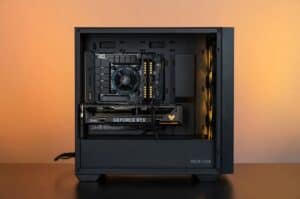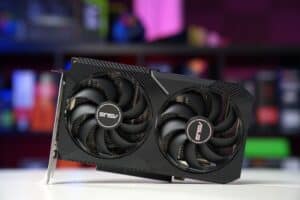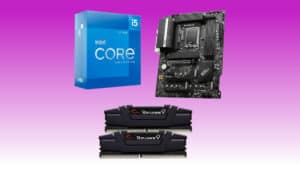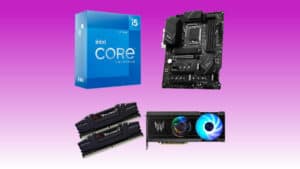X670E vs X670 vs B650: What’s the difference?
AMD unveiled its new generation of motherboards at Computex 2022, but what’s the difference between the X670E, X670, and B650?
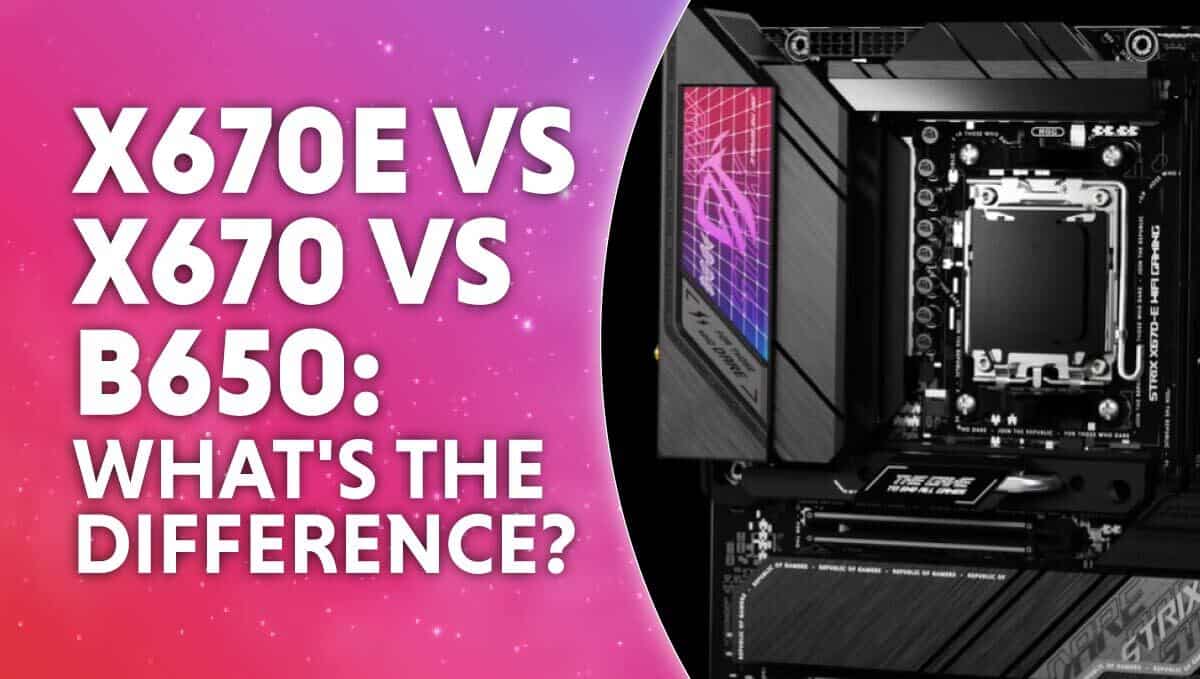
WePC is reader-supported. When you buy through links on our site, we may earn an affiliate commission. Prices subject to change. Learn more
Dr. Lisa Su kicked off Computex 2022 with an AMD keynote where, among other exciting things, she announced AMD’s AM5 platform by naming three upcoming chipsets. The chipsets mentioned in the keynote were the X670E, X670, and the B650. However, one thing that wasn’t explained properly was the difference between each chipset. So, X670E vs X670 vs B650, which is the better chipset?
In this article, we are going to use everything we know to cover the differences between the X670E, X670, and B650 chipsets. There are a few differences to consider, some of which can be easily overlooked, especially if motherboards are unfamiliar territory for you.
First off though, back to basics. What is a chipset?
X670E vs X670 vs B650: What is a chipset?
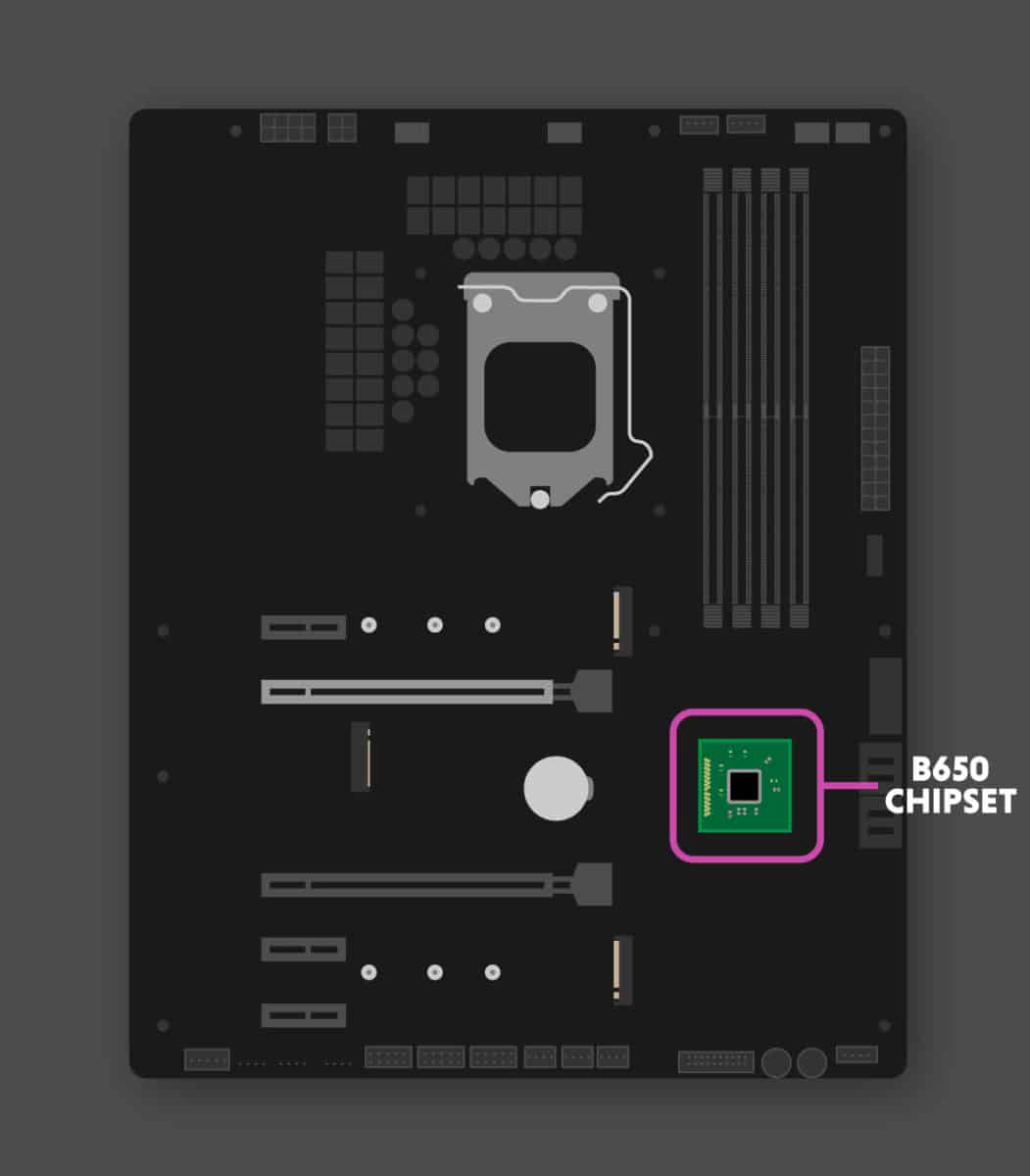
A chipset is a component on every motherboard and is one of the most important components. The chipset is the device that controls the communication between your CPU, RAM, and other components, including peripherals. The chipset also manages I/O such as determining how many USB devices your motherboard can support at any given time.
Chipsets are usually composed of one or more chips that feature controllers for not just hardware devices, but more commonly used peripheral devices too, such as keyboards and mice.
If you know anything about motherboards you will have heard the terms, ‘X570, Z690, B550’, and so on – these are the chipsets. Motherboard chipsets follow a hierarchy for both AMD and Intel processors, and the higher the number the better the chipset and the more it will support.
With that out of the way, let’s talk about the new 600 series chipsets AMD introduced at Computex 2022.
AMD AM5 motherboard features
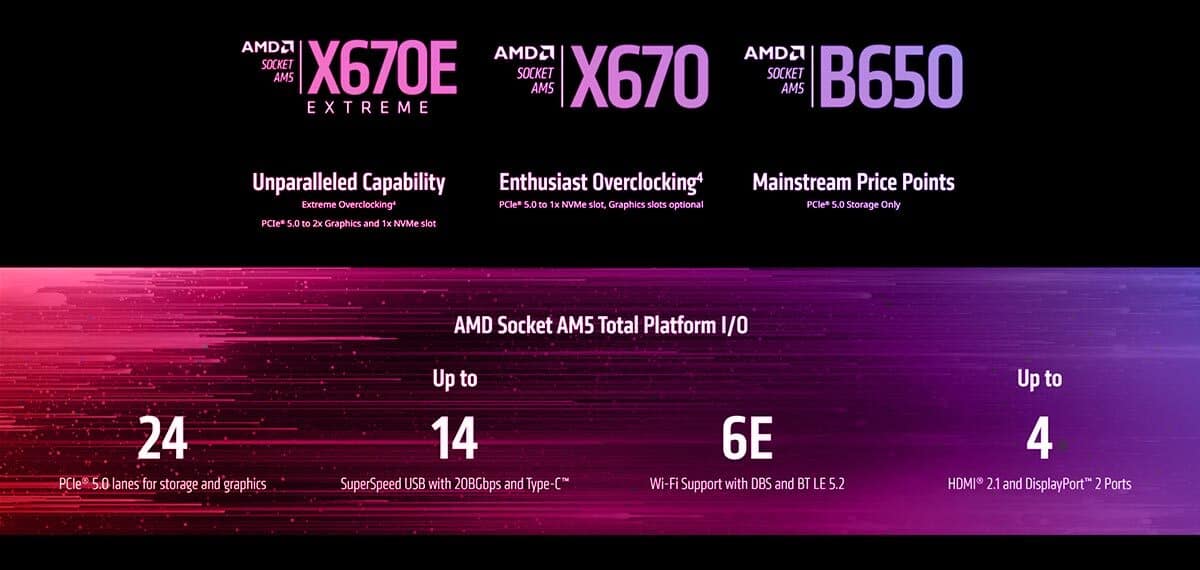
There are a plethora of new features and technological advancements packed into the new AM5 motherboards, with AMD going all-out to bring us unparalleled support and connectivity for all devices and users.
AMD’s AM5 socket will feature 24 ultrafast PCIe Gen 5 lanes, connected directly to the CPU socket, allowing for ultra-fast connectivity, communication for storage devices, and graphics cards.
AM5 motherboards now also support up to 14 super-fast USB ports, donning 20GB/s transfer speeds and USB type C connectors.
AMD has integrated up to four HDMI 2.1 and DisplayPort 2.0 ports into its higher-end AM5 motherboards, allowing for unparalleled connectivity for the Ryzen 7000 series, which all seem to ship with RDNA 2 integrated graphics.
In addition to all of these features, the AM5 platform will feature an all-new SVI-3 power infrastructure, bringing a multitude of advantages to the AM5 platform. The advantages include additional power stages, fine-grain power and voltage control, and faster frequency response times.
AMD 600 series chipsets
Three chipsets were announced at Computex 2022, but besides the names of each of the chipsets, we didn’t really get too much information about them.
Here is the information that was revealed about the new chipsets.
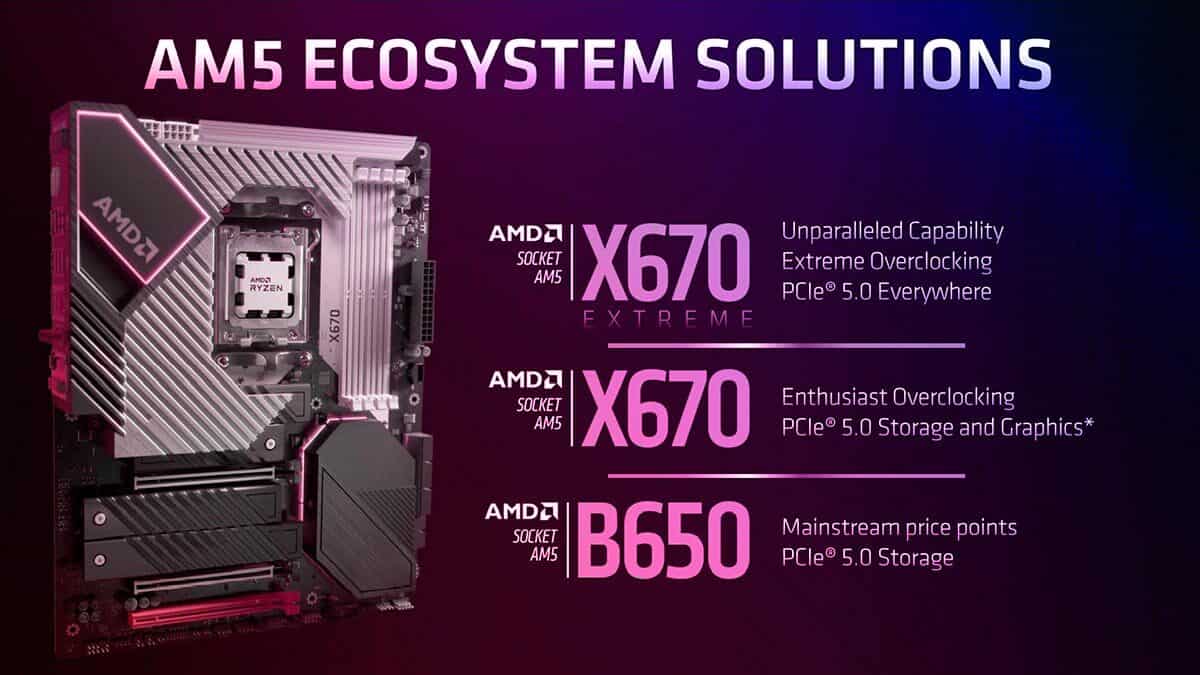
- X670E (extreme) is the best of the best, featuring all the connectivity powered by the latest and fastest technology – DDR5, PCIe 5 everywhere, and the most extreme overclocking potential.
- X670 will feature some PCIe gen 5 connectivity, but not all PCIe or M.2 slots. X670 will also most likely have less connectivity, but will still feature strong overclocking potential.
- B650 is the budget option, being a more bare-bones motherboard with less connectivity – the perfect balance of price point and capability – featuring all the connectivity that AM5 has to offer, but none or much less of the overclocking capabilities.
X670E
The X670E chipset is the AM5 flagship, with the letter ‘E’ standing for ‘Extended’. AMD’s X670E chipset features all the bells and whistles AMD announced at its keynote – PCIe Gen 5 for storage and graphics, SVI-3 power infrastructure for better overclocking and more power stages, and up to four HDMI 2.1 and DisplayPort 2.0 ports. The X670E features PCIe connectivity everywhere, meaning primary and secondary PCIe slots, and all M.2 storage slots.
The Extreme version of AMDs X670 is also said to have completely unrestricted overclocking, meaning all the VRMs you could ever need with excellent power staging and delivery.
The X670E is the best of the best, and will most likely cost a pretty penny. These will most likely be your Crosshair Heros and Aorus Extremes.
X670
The X670 chipset can be thought of as the little brother to the X670E, with all of the connectivity, just not as many features.
The X670 still features enthusiast-level overclocking support, although it may not feature quite as many VRMs or power delivery support.
The main difference is the PCIe Gen 5 support, with the X670 only having PCIe GPU support in its primary X16 PCIe slot – the rest will be PCIe Gen 4.
Storage remains the same, however, with PCIe Gen 5 powering M.2 storage on both the X670E and X670 motherboards.
The X670 chipset motherboard will likely cost a little less than the X670E – how much exactly we’re not quite sure.
B650
The B650 chipset is the budget-oriented entry into the AM5 chipset scene.
Some of the B650 chipset motherboards will not feature overclocking support and will most likely have much fewer VRMs, as fewer are needed in a system incapable of overclocking. There’s no real art to guessing which do and which don’t as it’s not manufacturer specific, You’ll have to check the specifications on the motherboard you’re looking at.
The B650 chipset will not feature PCIe Gen 5 capabilities for any of its PCIe slots, 8x or 16X. However, the B650 will still feature PCIe Gen 5 storage technology for compatible M.2 SSDs.
In all likelihood, the B650 chipset will also feature less ultrafast USB connectivity and fewer onboard HDMI and Display Ports. Whether AMD has downgraded those ports to a lesser version (HDMI 2.0) remains a mystery.
The B650 motherboards will be the most budget-friendly of the three. The trade-off is that you get fewer features and slower connectivity.
Dual chipsets
The X670E and X670 will feature a dual chipset design, with a PCIe switch between them. The dual chipset design is like nothing we have ever seen before, and it introduces technological challenges.
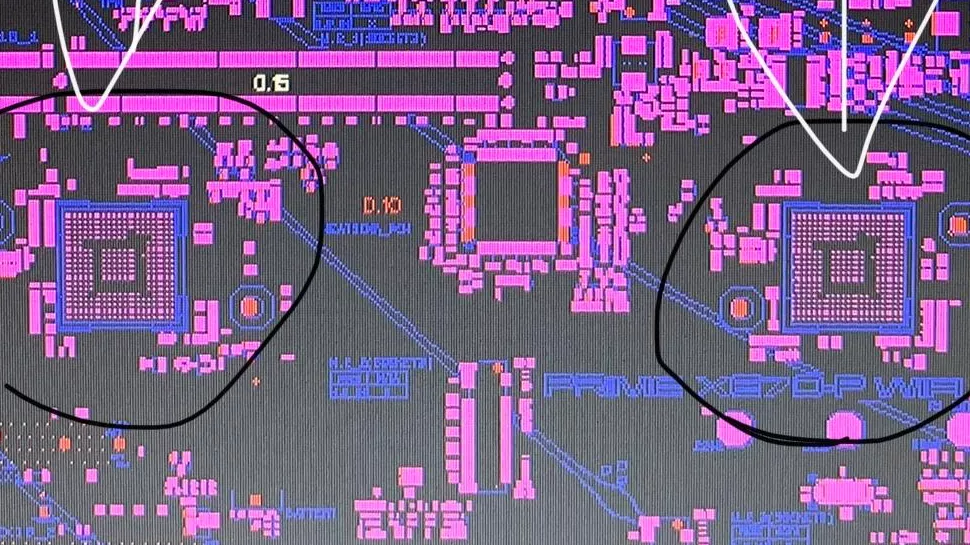
The two chipsets featured in the higher-end X670E and none E boards are essentially two B650 chipsets built on the same board. The two chipsets are separated by a PCIe switch, which will presumably switch or direct signals towards whatever chipset is assigned to that feature or component.
The chipsets could be set up in parallel as there are only so many PCIe lanes available per CPU, 16X for the GPU, 4X for the SSD, and 4X to communicate with the chipset.
With this information, we can accurately assume that there could be almost double the connectivity on higher-end X670 and X670E motherboards. Due to the fact that X670E motherboards contain PCIe Gen 5 connectivity on all of their PCIe slots, we’d say the assumption is very likely accurate.
Final word
There are more than a couple of differences between AM5’s new chipsets and we don’t even have all the details yet. The main differences have presumably already been announced, and we can use this to make an appropriate decision when it comes time to select a new motherboard.
Of course, the best is the X670E with all the connectivity of a box of LEGO. PCIe Gen 5 support, ultra-fast USB connectivity, and the massive overclocking potential are just a few of its best features.
We’ll keep you updated on more AM5 information as it comes. If you can’t wait, however, we have dedicated articles on both AM5 and Zen 4. We hope you enjoyed this X670E vs X670 vs B650 article.


